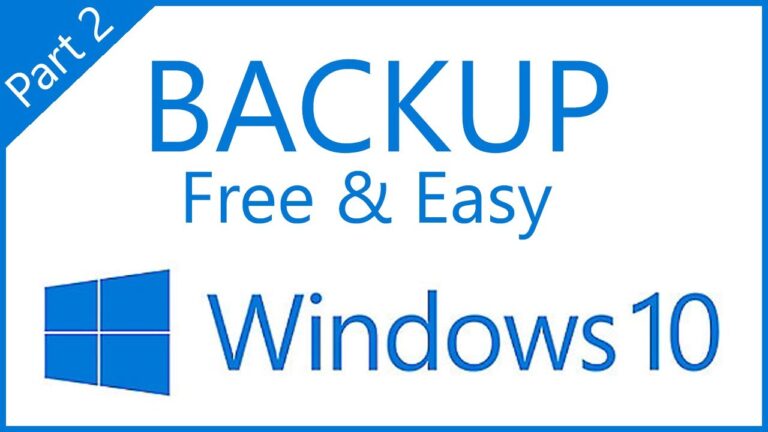Save your hardware have a disaster recovery plan
Important implementations that have to be taken to ensure Hardware Disaster Recovery is successful
When it comes to hardware, it’s important to have a plan for disaster recovery.
Whether it’s a fire, a flood, or a simple power outage, having a plan in place can save your hardware and your business. Here are a few tips for creating a disaster recovery plan for your business :
Have a backup of all your data. This includes backups of the operating system, applications, databases, etc. It is recommended that you back up at least once per day. If you don’t have time to do this yourself, consider hiring someone who does.
Make sure that your backup media is stored offsite. You should store your backup media in a location
1. Identify the risks for Hardware Disaster Recovery.
What could potentially damage your hardware? Make a list of the most likely risks and prioritize them.
For example, if your office is located on the first floor of an old building with no sprinkler system, then water damage might be high on your priority list.
Other risks to consider include theft, fire, power surges, and extreme temperatures. Depending on your specific situation, you may need to prioritize these risks differently.
For example, if you live in an area with a high crime rate, then theft may be a more pressing concern than fire.
Once you’ve identified the risks, you can start taking steps to protect your hardware. For example, you might invest in a fireproof safe to protect
Determine how much you need to recover.
If you’re not sure what you’ll need to recover, contact a professional who specializes in hardware recovery.
They will help you determine how many computers, servers, printers, and other devices you need to recover.
The cost of recovering these items varies depending on their condition.
Before you can determine the cost of recovering your hardware, you need to know how much you need to recover.
This can be a difficult task if you’re not sure what you’ll need, which is why it’s important to contact a professional who specializes in hardware recovery.
They will help you determine how many computers, servers, printers, and other devices you need to recover. Only then can you begin to calculate the cost of recovering your hardware.
Determine where you want to keep them.
If you decide to store your hardware in a warehouse, make sure that you have enough space for it. Also, consider using climate-controlled storage units.
If you are storing your hardware in a warehouse, make sure that you have enough space to accommodate it.
Additionally, you may want to consider using climate-controlled storage units to protect your hardware from extreme temperatures.
Decide which type of hardware you need.
You may need to purchase new equipment or repair existing equipment. Determine whether you need to buy new or used equipment.
New equipment typically has a longer lifespan than used equipment. However, used equipment may be cheaper.
If you’re buying new equipment, you’ll also need to determine whether you need desktop PCs, laptops, tablets, smartphones, or any other device.
Depending on the size of your company, you may need several different types of hardware.
Consider purchasing additional hardware as needed.
If you don’t already own all the hardware you need, you may need to purchase additional equipment.
It’s always better to overbuy than underbuy. This way, if you do need to replace some of the equipment, you won’t have to go without.
Make sure that you have adequate insurance coverage.
Most companies offer business owners liability insurance.
However, this doesn’t cover everything. You should also consider purchasing property damage insurance.
Property damage insurance covers the costs associated with replacing damaged equipment.
If you don’t have sufficient insurance, you could end up paying out of pocket for repairs.
Contact your local agent to learn about your options.
If you don’ t have adequate insurance coverage, you could end up having to pay out of pocket for repairs to your computer systems.
Ask yourself: How much time am I willing to spend fixing my computer?
How long before I’m back online?
What happens if I lose access to my data?
What happens if my computer crashes again?
Is there an alternative solution?
If you’re not comfortable spending hours trying to fix your computer, you might want to consider an alternative solution.
2. Create a backup plan.
How will you backup your data and ensure that it’s accessible in the event of a disaster?
As data becomes increasingly central to business operations, it’s more important than ever to have a robust backup plan in place.
Otherwise, you risk losing critical information in the event of a disaster.
There are a few key considerations when creating a backup plan:
-How often will you backup your data?
Depending on the volume of data and how frequently it changes, you may want to backup daily, weekly, or monthly.
-Where will you store your backups?
You’ll need to choose a storage solution that is both secure and accessible.
For example, you might store backups offsite in the cloud or on an external hard drive.
-How will you ensure that your backups are usable? It’s important
-How can you ensure that the backup will be accessible in the event of a disaster?
3. Test your plan.
Make sure that your plan is feasible and that all your employees know what to do in the event of a disaster.
This means testing your plan at least once per year. In addition, you should test it after every major change to the plan (such as a new product launch or a significant price increase).
You can do this by asking yourself questions such as:
* How will my customers react?
* What are they likely to say about me and my business in general?
* Will I be able to deliver on what I promised them?
* Do I have enough staff to handle any issues?
* How will my competitors respond?
* What will they say about me and my company?
4. Make it easy for your team to follow your plan.
Your employees play a crucial role in helping you implement a disaster recovery plan.
They need to understand what their responsibilities are and how they fit into the process
4. Be prepared to evacuate.
If a disaster strikes, you may need to evacuate your premises. Make sure you have a plan for where everyone will go and how they will get there. Therefore , it is important that you know the local emergency services number in case of an evacuation.
In some cases, you might be asked to leave your home or business temporarily. If this happens, make sure you have enough supplies on hand so that you can survive until you are able to return home. You should also keep in mind that if you do not have access to electricity, you will need to find ways to charge your mobile devices.
Keep your plan up to date.
It’s essential that you regularly review your plan and update it with any changes to your business. This way, you can stay ahead of potential problems and avoid unnecessary costs.
Document everything.
Documenting your plan helps you track progress and ensures that you don’t forget anything.
5. Stay calm.
In the event of a disaster, you will probably feel stressed and anxious. However, try to remain calm and think clearly.
Don’t panic!
Remember that you’re dealing with a situation that could potentially affect your livelihood.
Therefore, it is important that your response is measured and appropriate.
Keep your cool.
When things start to go wrong, it’s tempting to lose your temper. But this won’t help you solve the problem. Instead, take a deep breath and focus on solving the issue.







